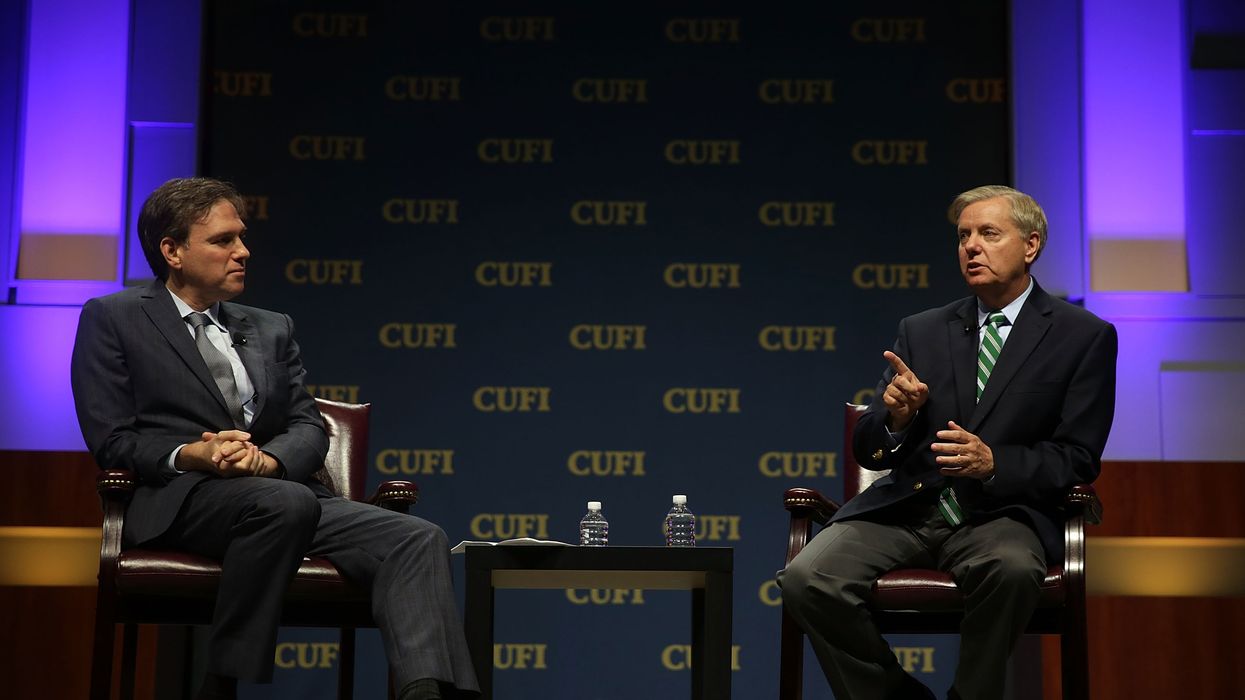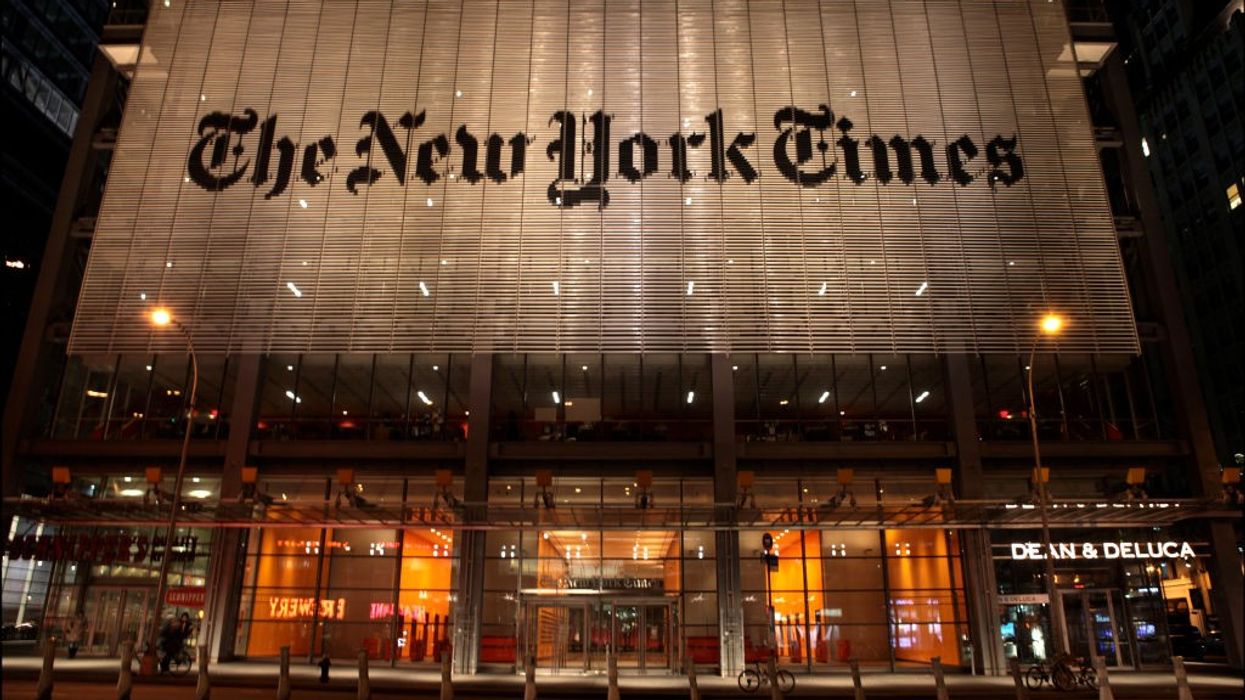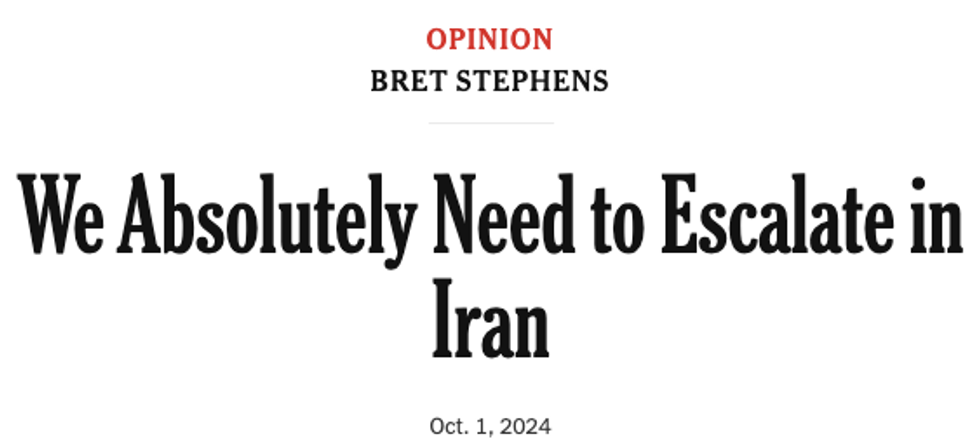The Cruelty and Speciousness of Bret Stephens' Denial of Genocide
Bret Stephens brings an unprecedented power over the editorial board at The New York Times because he is seen as the voice of the Israeli government-can-do-no-wrong domestic lobby.
After the long-time skittish New York Times published a lengthy essay by the renowned genocide scholar, Prof. Omer Bartov of Brown University, titled “I’m a Genocide Scholar, I Know It When I see It,” the Palestinian-hater, Times columnist Bret Stephens, immediately jumped into the Netanyahu‑style rebuttal mode. His column was titled “No, Israel is Not Committing Genocide in Gaza.” His cruel and specious assertion, contradicted by many genocide scholars, was that if the Israeli regime was truly genocidal, they would have committed “hundreds of thousands of deaths” in Gaza instead of the mere 60,000 deaths reported by the Hamas‑run Health Ministry.
Get real, Mr. Stephens, the Israeli military has destroyed the lives of at least one out of four Palestinians there, or about half a million at least, from the daily bombing since October 7, 2023, of civilians and their infrastructure. Saturation aerial and artillery bombardments of 2.3 million defenseless Palestinians, also under constant sniper fire, crammed into an area the geographic size of Philadelphia. (See The Lancet, “Counting the Dead in Gaza: Difficult But Essential”, my column “The Vast Gaza Death Undercount—Undermines Civic, Diplomatic, and Political Pressures” and my article in the August-September 2024 Capitol Hill Citizen). American doctors back from Gaza have repeatedly observed that almost all the survivors are sick, injured, or dying.
Seizing on the Hamas regime’s self‑interest in a low death count, to not arouse further the ire of the residents of Gaza against their lack of bomb shelters and other protections, Stephens constructs the usual fictions, reflecting the American Israel Public Affairs Committee (AIPAC) and Israeli Prime Minister Benjamin Netanyahu’s regime, that Israel does not “deliberately target and kill Gazan civilians.” [Former United Nations Ambassador and Foreign Minister Abba Eban wrote of Israel under then Prime Minister Menachem Begin that Israel “is wantonly inflicting every possible measure of death and anguish on civilian populations in a mood reminiscent of regimes which neither Mr. Begin nor I would dare to mention by name.”] Look at the reports by Times journalists from the area, see the pictures of the mass murder, the slaughter of babies, children, mothers, and fathers that comprise Netanyahu’s Palestinian holocaust.
Listen to the former Israeli Minister of Defense Yoav Gallant’s October 9, 2023 enforced declaration that Israeli demolition of Gaza would include “…no electricity, no food, no fuel, everything is closed.” “We are fighting human animals, and we are acting accordingly.”
Stephens is immovable. Over a year ago, he shockingly wrote that the Israeli military is not using enough force on the Palestinians.
And so indeed has the Israeli military targeted innocent families, journalists, and U.N. Relief and Works Agency for Palestinian Refugees in the Near East staff. To quote Professor Bartov, “the systematic destruction in Gaza not only of housing but also of other infrastructure—government buildings, hospitals, universities, schools, mosques, cultural heritage sites, water treatment plants, agriculture areas, and parks…” Bartov grew up in Israel, served four years in the Israeli army, and knows the situation there in great detail.
Bret Stephens brings an unprecedented power over the editorial board at the Times because he is seen as the voice of the Israeli government-can-do-no-wrong domestic lobby inside the Times who is always ready to frivolously accuse anybody at the paper of antisemitism to shut them up or water down their content.
As Will Solomon reported July 25, 2025 in Counterpunch, Stephens is the “minder” of what is unacceptable criticism of the Israeli regime and has succeeded significantly in his censorship. If you wonder for example why it took the Times editorial board so long to condemn the Israeli regime’s starvation of Gazans, especially the most vulnerable infants and children ( See July 31 editorial and The New York Times July 27, 2025 opinion piece “The World Must See Gaza’s Starvation” by Mohammed Mansour), it is likely the climate of fear or weariness generated by Stephens.
Stephens is given remarkable latitude by the Times editors. His falsifications and antisemitic rage against Palestinian semites (see, “The Other Antisemitism” by Jim Zogby) escape his editors’ pen. He is given unusual space, including a recently concluded weekly column with Gail Collins, which replaced valuable editorial space, with repartees that had become shopworn over the years. He also is given special writing projects.
Consider his background. A former hard-line editor of The Jerusalem Post, then for years a warmongering columnist for The Wall Street Journal. Especially vicious against Palestinians and their supporters, Stephens came to the Times for a singular reason. The Times wanted a right-winger who did not like the new president, Donald Trump. What the Times got was a cunning censor of their journalistic integrity and editorial respect for the regular devastating reports the Times was getting from their own journalists operating out of Jerusalem. They were not allowed into Gaza to report independently on what was being done with U.S. tax dollars and the unconditional support from former U.S. President Joe Biden and now Trump.
Imagine, for example, the Times not writing an editorial following the Israeli booby-trapping of thousands of pagers in Lebanon. This was called a clear war crime by former Secretary of Defense Leon Panetta.
While the Times has published op-eds critical of Israeli aggressions, it has maintained a list of words and phrases that could not be used in its reporting, such as “genocide.” It has avoided doing features on the many Israeli human rights groups sharply taking Netanyahu to task, or groups in the U.S., such as the very active Veterans for Peace with 100 chapters around the U.S. By contrast the Times devoted extensive space to repeated false propaganda by the Israeli regime.
Even coverage of the omnipresent Jewish Voice for Peace and If Not Now requires dramatic nonviolent civil disobedience, as with the October 24, 2023 sit-in at Grand Central Station, to get into the Times pages.
Throughout the months since October 7, and the mysterious total collapse of the multitiered Israeli border security apparatus on the Gaza border, still denied an official investigation by its perpetrators, the defiant presence of Stephens persists, though it is being countered by the sickening pictures of skeletal, starving Palestinian infants. (A survey last year by a British civic association had 46% of Palestinian children wanting to die and 97% expecting to be killed.)
Credit Stephens with covering his self-designated, intimidating role of policing what should not be appearing by staff in the Times’editorial pages. In his column with Collins, he used humor and praise of Times reports and book reviews not connected with the Israeli domination of the Middle East. Recognizing a no-win situation for herself, Gail Collins agreed not to raise the Israeli-Palestine issue in any of the hundreds of columns she wrote with Stephens, who is disliked by many at the Times.
Stephens is immovable. Over a year ago, he shockingly wrote that the Israeli military is not using enough force on the Palestinians. He refuses to disavow the most racist, vicious descriptions of Palestinians over the years by high Israeli government officials. He refuses to support opening Gaza to foreign journalists, including Israeli journalists. He even declines to support the airlifting of amputated and horribly burned Palestinian children to ready and able hospitals in the U.S.
The New York Times does not fear Donald Trump. But it does fear or is very wary of the smiling, internal censorious presence of this AIPAC clone and the attention he demands because of the forces he represents. The editorial board and Times management need to reject this affront to the freedom of its journalists and the paper’s institutional integrity.



 Reporting from The New York Times in September 2002. (Photo: Fairness & Accuracy in Reporting)
Reporting from The New York Times in September 2002. (Photo: Fairness & Accuracy in Reporting) 